#lee!kobayashi
Explore tagged Tumblr posts
Text
Okay but imma be fr

THIS BLUE BITCH IS A LEE. LIKE FUCKING LOOK AT HIM.
THAT IS THE LEE-EST LEE TO HAVE EVER LEE’D

AND THIS MOTHER FUCKER.
THIS MOTHER FUCKER NAMED DAIGOROU.
👏 HE👏IS👏A👏LER.
#sfw twords#As the gods will tickles#ler!daigorou#lee!kobayashi#Nah is his name kobayashi or tarou? I’m confuzzled
15 notes
·
View notes
Text
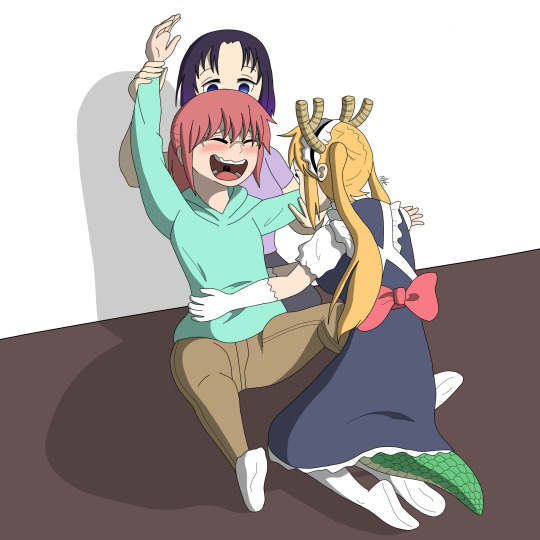
Just the first in the batch of projects I have planned! I'm so damn proud of this because I actually did some anatomy practice for once hehehe.
There will be one more lee!Kobayashi piece after this and I'm real excited for it kekeke
#tickling#tickle#tickle art#digital art#fanart#miss kobayashi's dragon maid#maid dragon#tohru kobayashi#elma jouii#kobayashi san chi no maid dragon#kobayashi san#lee!kobayashi#ler!elma#ler!tohru
53 notes
·
View notes
Text

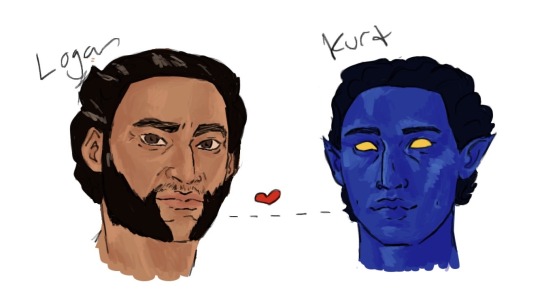
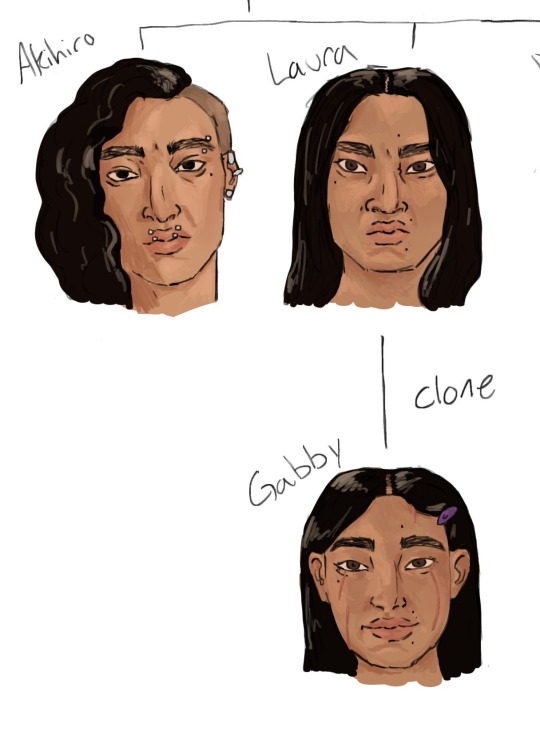
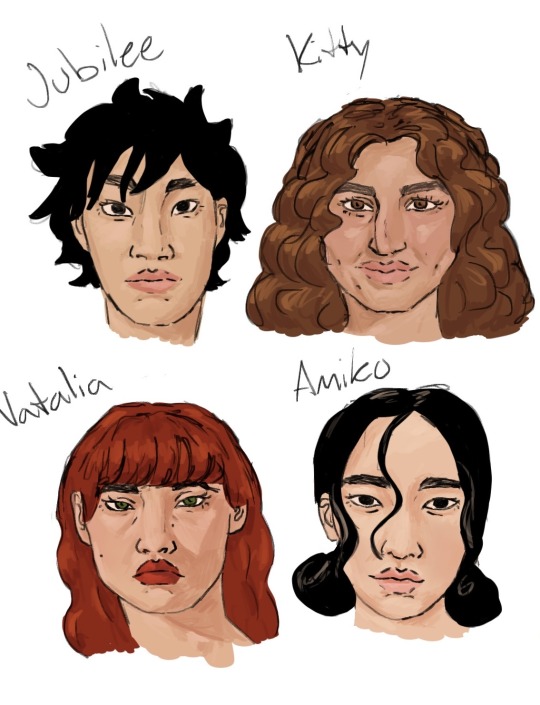

Here’s the finished version of the family tree! I loved drawing this >:33
#and all the kids that are actually related to him have different moms lol#my art#xmen#dahlias art tag#xmen fanart#wolverine#dad logan#dadverine#kurt wagner#nightcrawler#logurt#daken akihiro#Laura Kinney#gabby Kinney#jubilee#jubilation lee#kitty pryde#natasha romanoff#natalia romanova#amiko kobayashi#raze darkholme#jimmy hudson
124 notes
·
View notes
Text
how weeaboo of me is it to prefer the japanese dub of the netflix scott pilgrim
8 notes
·
View notes
Text

Poolverine Week 2024 - Day 4 - “Single Dad”
@poolverine-week
Front: Akihiro (Left), Logan (Right). Middle row: Laura Kinney (Left), Gabby Kinney (Center), Wade Wilson (Right). Back row: Jubilation Lee (Left), Kitty Pryde (Center), Hisako Ichiki (Right).
There’s not enough seats, but I assume in another caravan is his other children including but not limited to Amiko Kobayashi, Jimmy Hudson, Erista, and the Mongrels.
119 notes
·
View notes
Text
i always find it funny that twitter lets you actually lets you go into your settings and see your "interests" that it assumes you have based on your activity. i mean all the targeted advertising panopticon shit is very darksided but it's funny to see the list laid bare like this
interests twitter has assigned me include, but are not limited to:
Amazon Prime
Angry Birds
Arknights
Astral Chain
Bernie Sanders
Blaseball
Bread
Brennan Lee Mulligan
COVID-19
Cardfight!! Vanguard
Chicken recipes
Chrono Cross
Combat sports
Curb Your Enthusiasm
Danganronpa
Doki Doki Literature Club
Dr. Disrespect
Dragon Ball Z Dokkan Battle
Dril / wint
Elon Musk
Furry fandom
Game emulation
Geoff Keighley
"Google brand conversation"
Gunma-chan (the mascot of japan's gunma prefecture, apparently)
Homestuck
JRPGs
Jaboukie Young-White
Jennifer Hale
Keemstar
Kizaru (this is apparently the name of a russian rapper but i definitely got this interest for tweeting about the one piece character)
Legalized Marijuana
Luigi's Mansion
Markiplier
Masahiro Sakurai
"Miku Hatsune"
Miss Kobayashi's Dragon Maid
Mobile Suit Gundam: Iron-Blooded Orphans (this is the only gundam series they have listed separately)
PAW Patrol
PAW Patrol
PAW Patrol
PlayStation Vita
Pope Francis
Roger Craig Smith
Saint Seiya
Secret of Mana
The Mighty Ducks: Game Changers
Todd Howard
Touhou Project
Twin Peaks
Twin Peaks
Twin Peaks
Twin Peaks: The Return
Walmart
"X - the everything app"
Yoshi
Young Sheldon
154 notes
·
View notes
Text
I'm going to break down whether every character in Zeta Gundam would sleep with Char Aznable/Quattro Bajeena. No one asked me to do this but I will anyway.
Note: I'm only including characters that interact with Char at least a little bit and/or characters I care enough to talk about. Also I'm not including Reccoa because we, uh, canonically know the answer to that question, and that's boring.
Kamille Bidan

So the question "would they sleep with Char" is technically two questions, that and "would Char sleep with them?" Unless stated otherwise I'll treat the second question as a forgone conclusion, Char would never turn down an opportunity to manipulate someone via sex. In this case though, we are talking about an underage character that Char comes to view almost paternally. That being said... yeah sorry I think Char would do it, at least early on. Sorry, Char sucks I don't know what to tell you. Conversely, though, Kamille early on has way too many hang-ups about masculinity to sleep with another man, and later on knows Char too well and knows not to get entangled in His Bullshit, so ultimately it would not happen.
Fa Yuiry

Hell no, she has far too much self-respect to fuck Char.
Emma Sheen

No, too much self-respect AND too gay to fuck Char.
Henken Bekkener

He would, but he would rationalize it away hard. "It was just two guys helping each other out," "that specific sex act isn't gay," "it was just once" (it would not be just once).
Bright Noa

He's married and it's grossly unprofessional to sleep with your subordinates, so he would not sleep with Char... sober. Put a Mai Tai or two in him and that won't be the only thing in him.
Katz Kobayashi

Oh... oof. Thankfully, this kid is far too annoying for Char to fuck, but if he wanted to manipulate Katz into it... I'm sorry to say but he probably could.
Blex Forer

Oh they're absolutely fucking on the dl don't lie.
Apolly Bay

He would try it once, just to see if he was into dudes at all. Ultimately he'd decide this wasn't for him but hey, try everything once.
Roberto

You see that mustache? Hell yea he would.
Torres

He lowkey wants to, but for some reason Char never asks. He's not mad (he's a little mad.)
Astonaige Medoz

He's too busy for this shit.
Wong Lee

I'm sorry to tell you but... yeah, yeah he would. And Char would be too pragmatic to turn him down. I'm so, so sorry for this, but it's the truth.
Haman Karn

She is preparing for the hate fuck of the century. She has been preparing for YEARS. Her Body Is Ready.
Anyway, yeah Char would decline.
Hayato Kobayashi

Maybe while drunk, but he'd have to be so drunk that even Char would be like "eh, no, this is a line I wouldn't cross."
Beltorchika Irma

She would, but it would be Cat on a Hot Tin Roof type of situation. Just... wildly unhealthy for everyone involved.
Amuro Ray

yeah maybe
20 notes
·
View notes
Text
since i can't find one and need to know who to aim for...
list of reverse: 1999 jp dub cast (updated for 1.4)
210 - hirose daisuke 37 - iguchi yuka 6 - nakamura yuuichi
a knight - hayami show alien t - fukuhara anjou an-an lee - sakura ayane apple - hirakawa daisuke arcana - koshimizu ami
baby blue - suzaki aya balloon party - minase inori bette - kanzaki maki bkornblume - ueda reina blonney - saito shuka bunny bunny - ozawa ari
charlie - matsuda satsumi centurion - ikuta teru charlton - nomiya kazunori click - uchiyama kouki constantine - tanaka atsuko cristallo - aimi
darley clatter - yada kouhei diggers - tachibana shinnosuke dikke - kawasumi ayako door - shimizu sakuma druvis iii - ishikawa yui
eagle - noguchi ruriko enigma - umehara yuuichirou erick - tanaka chiemi eternity - fairouz ai
forget me not - suwabe junichi
horropedia - okitsu kazuyuki
isabella - kino hina
jessica - waki azumi john titor - konishi mai
kaalaa baunaa - ootsubo yuka kanjira - akasaki chinatsu kumar - fujitou chika
la source - yuzuki kazuka leilani - tachibana yuki lilya - kitamura eri lucy - suwa ayaka
matilda - itou ayasa medicine pocket - hanae natsuki melania - ueda kana mesmer jr. - kudou haruka mondlicht - tsumugi risa ms. moissan - kohara riko ms. new babel - uchida maaya ms. radio - odashima kazami
necrologist - wakayama shion nick bottom - satou fumiya
oliver fog - nagatsuka takuma onion - horikawa kaede
pavia - nozu pickles - saito soma poltergeist - maekawa ryouko
rabies - takagaki katsuhisa & mugiho anna regulus - yamamoto nozomi ring - sakakihara yuki
satsuki - touyama nao schneider - yuuki aoi shamane - yasumoto hiroki sonetto - uchida shu sophia - kobayashi yuu sotheby - itou miku sputnik - toba yuuko sweetheart - tanaka rie
tennant - takahashi chiaki the fool - nitta kyousuke tooth fairy - uesaka sumire ttt - sumi tomomi jiena twins sleep (lisa & louise) - kamitaka suzuka
vertin - takamori natsumi voyager - hondo kaede
x - toki shunichi
z - liyuu зима - totto
#reverse 1999#SUWABE. SUWABE WHY AREN'T YOU PLAYABLE.#this is like... so many characters#surely not all of them are available upon release??#i think i'm even missing some like i can't find cv info on voyager anywhere#(eta: have added voyager)#none of the 1.1 and beyond charas are here either#so these must really all be 1.0? wild#why does tennant have to be 5* anyway i want to main tennant :(#anyway it's 5 so far i think#5 hpmi cvs appear (doppo dice jakurai nemu ichijiku)#enough for me to give it a shot lol#crab files
72 notes
·
View notes
Text
Movies/TV Watched 2024
Asteroid City (Wes Anderson, 2023)
Nomadland (Chloé Zhao, 2020)
Cordelia (Adrian Shergold, 2019)
The Piano (Jane Campion, 1993)*
Malcolm X (Spike Lee, 1992)*
Avatar (James Cameron, 2009)
Child’s Play (Tom Holland, 1988)*
Train (Gideon Raff, 2008)
Silent Hill (Christophe Gans, 2006)
Nam June Paik: Moon Is the Oldest TV (PBS American Masters) (Amanda Kim, 2023)
Past Lives (Celine Song, 2023)
Basic Instinct [Director’s Cut] (Paul Verhoeven, 1992)*
In Cold Blood (Richard Brooks, 1967)
What Lies Beneath (Robert Zemeckis, 2000)
Fellini Satyricon (Federico Fellini, 1969)
Significant Other (Dan Berk, Robert Olsen; 2022)
The Mimic (Huh Jung, 2017)
Extinction (Miguel Ángel Vivas, 2015)
The Visit (M. Night Shyamalan, 2015)
The Hole in the Ground (Lee Cronin, 2019)
Batman (Tim Burton, 1989)
Cronos (Guillermo del Toro, 1993)
Under the Skin (Jonathan Glazer, 2013)
Our Flag Means Death [szn 2] (2023)
Wes Craven Presents: They (Robert Harmon, 2002)
Carnival of Souls (Herk Harvey, 1962)
Leviathan (George P. Cosmatos, 1989)
Rick and Morty [szn 5] (2021)
Dark Skies (Scott Stewart, 2013)
Insidious: Chapter 2 (James Wan, 2013)*?
Insidious: Chapter 3 (Leigh Whannell, 2015)
Insidious: The Last Key (Adam Robitel, 2018)
Insidious: The Red Door (Patrick Wilson, 2023)
American Graffiti (George Lucas, 1973)*?
The Pope’s Exorcist (Julius Avery, 2023)
Independence Day (Roland Emmerich, 1996)*
Men in Black (Barry Sonnenfeld, 1997)*
The Exorcist (William Friedkin, 1973)*
Poor Things (Yorgos Lanthimos, 2023)
Angels & Insects (Philip Haas, 1995)*?
Tucker & Dale vs. Evil (Eli Craig, 2010)
The Purge (James DeMonaco, 2013)
4/20 Massacre (Dylan Reynolds, 2018)
The Fast and the Furious (Rob Cohen, 2001)
Poisoned Ground: The Tragedy at Love Canal (PBS American Experience) (Jamila Ephron, 2024)
Beetlejuice (Tim Burton, 1988)*
The Signal (William Eubank, 2014)
Beetlejuice Beetlejuice (Tim Burton, 2024)
The SpongeBob SquarePants Movie (Stephen Hillenburg, Mark Osborne; 2004)
Felix the Cat: The Movie (Tibor Hernádi, 1988)
Speak No Evil (James Watkins, 2024)
Kwaidan (Masaki Kobayashi, 1964)*?
The Portrait of a Lady (Jane Campion, 1996)
Sisters with Transistors (Lisa Rovner, 2020)
Holy Smoke! (Jane Campion, 1999)
Shock Treatment (Jim Sharman, 1981)*
Space: The Longest Goodbye (Ido Mizrahy, 2023)
House of Wax (Jaume Collet-Serra, 2005)
The Lion, the Witch and the Wardrobe (Bill Melendez, 1979)*
Wojnarowicz: F**k You F*ggot F**ker (Chris McKim, 2020)
Longlegs (Osgood Perkins, 2024)
O Brother, Where Art Thou? (Joel Coen, 2000)*
Tess (Roman Polanski, 1979)
Barbarian (Zach Cregger, 2022)
Home Alone (Chris Columbus, 1990)*
Jennifer’s Body (Karyn Kusama, 2009)
Rick and Morty [szn 6] (2022)
The Seeding (Barnaby Clay, 2024)
Edward Scissorhands (Tim Burton, 1990)*
Beatles ’64 (David Tedeschi, 2024)
Fanatical: The Catfishing of Tegan and Sara (Erin Lee Carr, 2024)
Raggedy Ann & Andy: A Musical Adventure (Richard Williams, 1977)*
Rick and Morty [szn 7] (2023)
Five Nights at Freddy’s (Emma Tammi, 2023)
Immaculate (Michael Mohan, 2024)
Freaknik: The Wildest Party Never Told (P. Frank Williams, 2024)
The Booksellers (D. W. Young, 2019)*
His House (Remi Weekes, 2020)
Time Cut (Hannah MacPherson, 2024)
Don’t Move (Adam Schindler, Brian Netto; 2024)
Carry-On (Jaume Collet-Serra, 2024)
Subservience (S. K. Dale, 2024)
The Muppet Christmas Carol (Brian Henson, 1992)*
May December (Todd Haynes, 2023)
Horse Girl (Jeff Baena, 2020)
Psycho (Alfred Hitchcock, 1960)*
Movies/TV watched 2024; asterisks * are rewatches, asterisks w/question marks *? are rewatches I couldn’t remember having seen before but had a vague sense of familiarity and/or I found evidence of watching elsewhere in my archive. Struck titles were unfinished (I absolutely loved the book In Cold Blood but dozed off a bunch during the movie; Under the Skin seemed promising but I had to turn it off because I could NOT emotionally deal with the baby on the beach.)
This year I treated myself to some old weird nostalgia movies on VHS (YouTube or Internet Archive links provided when available). We have a decent collection of thrifted DVDs and we borrow a lot of movies from the library. Occasionally I’ll sign up for a month of a streaming service if there’s something ~exclusive~ we want to watch, and then we’ll end up watching whatever horror garbage is offered. Honestly, I think “meh, it was okay” was my main reaction to a lot of the movies I watched this year? Kind of a bummer.
Favorites in 2024: BEETLEJUICE BEETLEJUICE!!!!! I just loved everything about it :D I thought it was aesthetically the right amount of Tim Burton without being *too much* Tim Burton, ya know? (Love movie environments that feel like a dark ride!) Beetlejuice is a forever favorite, one of my earliest “crushes” (proving that I have absolutely never had good taste in men & that as early as age 4 I yearned for a witty dirtbag prankster to show up and “promptly whisk [me] off from [my] ordinary life into wacky adventures in the land of the dead” [description from the box set of the animated series, yikes lmao; my other fave beginning around this time was Doctor Who lol, obvious underlying theme is obvious]). ANYway, BJ BJ was also the first movie we saw in theatres post-covid! Not necessarily due to covid-related concerns, but just like, idk, being busy and frugal homebodies. And I guess since more theatres are offering restaurant food nowadays, they’re making it more difficult to sneak food in (no bags allowed), booooo.
Other faves: Asteroid City (I’m not usually a Wes Anderson person but this was visually stunning), His House, Poor Things. The Seeding was pretty wild, if heavy-handed. Tho I kind of thought *everything* about male/female relationships in horror movies I saw this year was getting pretty heavy-handed :/ Sisters with Transistors was a cool documentary about women (Delia Derbyshire, Daphne Oram, Wendy Carlos, Pauline Oliveros, et al.) in the early days of electronic music, dreamily narrated by Laurie Anderson (*heart-eyes*). Beatles ’64 was surprisingly okay! I *really* appreciated the interviews with people who were young Beatlemaniacs back in the ‘60s, hearing (mostly) women talk about how the Beatles represented a new way of being masculine, how liking the Beatles could provide a sense of agency for women navigating their own desires, etc. That was a cool perspective which I do not personally encounter very often in the Beatles cinematic universe. (For background: My two most recent long-term relationships have been with indie musicians who just happen to be extremely obsessed with the Beatles, so I’ve spent the past 17+ years absorbing deep dives about how great they are, and while I like many of their songs and Understand Their Position of Importance in the History of Pop/Rock/Human Culture, I just do not give a fuuuck on a personal level. But I do still begrudgingly respect my partner’s interest enough to occasionally watch a Beatles documentary with him.)
5 notes
·
View notes
Text

Got more lee Kobayashi for you guys, I definitely love wrecking this lady
#tickling#tickle#tickle art#digital art#fanart#sfw tickles#miss kobayashi's dragon maid#kobayashi-san#lee!kobayashi
32 notes
·
View notes
Text





Here’s a little family tree I’m working on of (most of) Logan’s kids!!!
#dahlias art tag#my art#logan howlett#wolverine#laura kinney#daken akihiro#raze darkholme#jimmy hudson#gabby kinney#jubilation lee#jubilee#kitty pryde#natalia romanova#natasha romanoff#black widow#amiko kobayashi#xmen fanart#wolverine fanart#dadverine#dad logan#snikt family#snikt fam
34 notes
·
View notes
Text
꒪ᤱᰱ ✷ ENHYPEN SERIES. ꊞ˚࿔
introducing enhypen's doll.
❪ 애인 ❫ an accurate guide about korea's flower! 𝒷𝑒𝓈𝓉 𝓰𝓲𝓻𝓵 , 𝓸𝓾𝓻 𝓌𝑜𝓇𝓁𝒹. ⁺ ᯽ other members: click ♥︎!

ੈ . ݁ M.AIN ◟ INFORMATION!
" 달콤한 poison in my blood veins. "
≡ ꕤ ๋࣪ 𓍢 STAGE NAME : YURI ❪ 유리 ❫
≡ ꕤ ๋࣪ 𓍢 BIRTH NAME : mayuri marie kobayashi.
≡ ꕤ ๋࣪ 𓍢 KOREAN NAME : dong geun seoyeon.
≡ ꕤ ๋࣪ 𓍢 ENGLISH NAME : maria dong—geun.
≡ ꕤ ๋࣪ 𓍢 NICKNAMES : may may, mayu, mahi bear. minnie mouse, yunyun, yummie ree, queen of hearts.
≡ ꕤ ๋࣪ 𓍢 BIRTHDATE : november 18th, 2004.
≡ ꕤ ๋࣪ 𓍢 ZODIAC SIGN : scorpio ❪ ♏︎. ❫ , ox ❪ 牛 ❫.
≡ ꕤ ๋࣪ 𓍢 ORIGINAL BIRTHSTONE : topaz ╱ citrine.
≡ ꕤ ๋࣪ 𓍢 BIRTHPLACE : akasaka, tokyo, japan.
≡ ꕤ ๋࣪ 𓍢 HOMETOWN : sapporo, otaru, japan.
≡ ꕤ ๋࣪ 𓍢 NATIONALITY : japanese ❪ 🇯🇵 ❫.
≡ ꕤ ๋࣪ 𓍢 GENDER IDENTIFY : cisgender female.
≡ ꕤ ๋࣪ 𓍢 LANGUAGE SPOKEN : japanese ( tokyo dialect ) ❪ 100% ❫. english ( western dialect ) ❪ 75% ❫. korean ( mixed dialect ) ❪ 88% ❫.

ੈ . ݁ P.HYSICAL ◟ INFORMATION!
≡ ꕤ ๋࣪ 𓍢 THE HEIGHT : 5'4" ❪ 163 cm ❫.
≡ ꕤ ๋࣪ 𓍢 THE WEIGHT : 104lbs ❪ 47 kg ❫.
≡ ꕤ ๋࣪ 𓍢 NATURAL HAIR COLOR : chestnut brown.
≡ ꕤ ๋࣪ 𓍢 CURRENT HAIR COLOR : honey blonde.
≡ ꕤ ๋࣪ 𓍢 EYE COLOR : dark brown.
≡ ꕤ ๋࣪ 𓍢 BLOOD TYPE : ab positive.
≡ ꕤ ๋࣪ 𓍢 BODY MODIFICATIONS : eight ear piercings, ❪ four on each ear ❫, and a naval piercing.
≡ ꕤ ๋࣪ 𓍢 FACE CLAIM : jang wonyoung ( ive ).
≡ ꕤ ๋࣪ 𓍢 VOCAL CLAIM : lee ji—eun ( solo artist ).
≡ ꕤ ๋࣪ 𓍢 RAP CLAIM : mark lee ( nct / nct dream ).
≡ ꕤ ๋࣪ 𓍢 DANCE CLAIM : jang wonyoung ( ive ).

ੈ . ݁ P.ERSONALITY ◟ INFORMATION!
≡ ꕤ ๋࣪ 𓍢 MBTI : isfj ❪ introverted. observant. feeling and judging. ❫ the DEFENDER. the defender personality type is quite unique, as many of their qualities defythe definition of their individual traits. though sensitive. all defenders have excellent analytical abilities; though reserved they have well developed people skills and robust social relationships; and though they are generally a conservative type. defenders are often receptive to change and new ideas. as with so many things, people with the defe nder personality type are more than the sum of their parts and it is the way they use these strengths that defines who they are.
≡ ꕤ ๋࣪ 𓍢 PERSONALITY STRENGTHS : 1. supportive, 2. enthusiastic, 3. hard—working, 4. love of learning.
≡ ꕤ ๋࣪ 𓍢 PERSONALITY WEAKNESS : 1. humble and shy, 2. too altruistic, 3. hates changing, 4. fear of public speaking.

ੈ . ݁ C.AREER ◟ INFORMATION!
≡ ꕤ ๋࣪ 𓍢 STAGE NAME : YURI! ꜜ she initially considered adopting the name marie at the start of her career but chang ed her mind at the last minute, opting to stick with her given nickname name instead of making any changes last minute.
≡ ꕤ ๋࣪ 𓍢 COMPANY : hybe entertainment ❪ 2018 — 20 20 ❫. BE:LIFT Lab ❪ 2020 — present time ❫.
≡ ꕤ ๋࣪ 𓍢 POSITION : visual and center. rest of positions are invaluable.
≡ ꕤ ๋࣪ 𓍢 INDIVIDUAL FANDOM : SPARKLES! ꜜ was cho sen by yuri,since she is such a girly girl she literally always has sparkles on her which is why during a fan call she decided on that name.
≡ ꕤ ๋࣪ 𓍢 REPRESENTATIVE EMOJI : 🎀 ❪ pretty pink bow ❫. or sometimes even 🫧 ❪ bubbles ❫.
≡ ꕤ ๋࣪ 𓍢 SIGNATURE :

#໒◌ 𓈒 𝐘𝐔𝐑𝐈 ୨୧#femadolsedit#enhypen eighth member#enhypen added member#8th member of enhypen#enhypen female member#enhypen addition#enha 8th member#enhypen 8th member#enhypen reactions#enhypen#ocmember#kpop extra member#kpop female oc#kpop addition#kpop oc#enhypen imagines
42 notes
·
View notes
Text
youtube
Monsters 103 Mercies Dragon Damnation | Official Trailer | Netflix
The anime adaptation of Eiichiro Oda's "Monsters: Ippaku Sanjō Hiryū Jigoku" one-shot manga will stream on Netflix on January 21, 2024.

Key visual
Cast

Yoshimasa Hosoya as Ryuma
Kana Hanazawa as Flare
Hiroki Tōchi as Cyrano
Mitsuaki Madono as D.R.
Katsuhito Nomura as Master
Staff
Director: Sung Hoo Park
Series Composition: Sung Hoo Park
Music: Hiroaki Tsutsumi
Original creator: Eiichiro Oda
Character Design: Takashi Kojima
Art Director: Fuminao Akai
Sound Director: Akiko Fujita
Director of Photography: Jumi Lee
Color design: Ryoji Nagasawa
Editing: Keisuke Yanagi
Music producer: Takeki Kobayashi
Animation Production: E&H production
#Monsters#Monsters Ippaku Sanjo Hiryu Jigoku#Monsters 103 Mercies Dragon Damnation#E&H production#Netflix#anime#TV anime#One Piece#OP#Wanted!#late post
27 notes
·
View notes
Text
The History of Korean Male Groups – From Yeonhee Professional Singers’ Quartet to BTS -> Pt. 5/? (Rewrite)
I am quite surprised by the limited information available regarding this male group, which is known by two different names. I will endeavour to clarify the situation; the group in question is referred to as either 'Arirang Boys' (아리랑보이즈는) or 'Joseon Music Troupe' (조선악극단). It remains unclear why they operated under these two names. This situation is reminiscent of the male groups 'Yeonhee Professional Quartet' (연희전문사중창단) and 'Youth Member' (청년회원), where the former has significantly more information available compared to the later.
Before Liberation – 1940s
Prior to delving deeper, I would like to clarify my approach to discussing this male group, which predates the liberation era and thus had limited information available, similar to my previous post regarding the first two male groups (Part 2). I will first outline the group and its members, followed by the company they were associated with. Additionally, I will mention the 'Jeogori Sisters,' who were part of the same company as the 'Arirang Boys,' noting that one member from each group is a married couple. However, I will refrain from providing extensive details about the 'Jeogori Sisters' as they will be addressed in a future post within The History of Korean Girl Groups.
The Arirang Boys (아리랑보이즈는), a four-member project group, emerged around 1940 and frequently performed alongside the Jeogori Sisters, a female ensemble featuring Lee Nan-young (이난영), Jang Se-jeong (장세정), Kim Neung-ja (김능자), Lee Jun-hee (이준희), and Seo Bong-hee (서봉희). The group comprised Kim Hae-song (김해송), a singer and composer married to Lee Nan-young, composer Park Si-chun (박시춘), comedian Lee Bok-bon (이복본) known for his jazz performances, and composer-arranger Song Hee-sun (송희선). Additionally, Hyun Kyung-seop (현경섭), a trumpet player for an orchestra record company, occasionally filled in for other members.

In no particular order, members of Arirang Boys: Kim Hae-song (김해송), Park Si-chun (박시춘), Lee Bok-bon (이복본), Song Hee-sun (송희선) and Hyun Kyung-seop (현경섭) who occasionally filled in for other members.
Despite not releasing any albums, they achieved popularity through their use of instruments like the guitar and violin, enhancing their stage performances. According to singer Kim Jeong-gu's (김정구) testimony prior to his death, the Arirang Boys were particularly cherished for their comedic interludes during shows.
The Arirang Boys Members:
I will briefly talk about the ‘Arirang Boys’ members here but will go into detail about them separately in future posts.
Kim Hae-song (김해송)

A few other photos of him here.
Kim Hae-song, whose real name was Kim Song-gyu (金松奎) and Japanese name Kyouya Kobayashi (金山松夫), was born in December 1911 in Gaecheon, Pyeongannam-do, during the Japanese colonial era, and he passed away around 1950 at approximately 39 or 40 years of age. It is believed that he remained in Seoul throughout the Korean War and died while being abducted to North Korea.
A multifaceted artist, he was a composer, singer, lyricist, guitarist, and musical director, active from 1935 to 1950. He graduated from Pyongyang Gwangseong High School in 1933, and although there are unverified claims of his attendance at Sungsil College and Jochi University in Japan, these remain unconfirmed. In 1935, he signed with Okeh Records, marking the beginning of his career as a singer and composer.
Lee Bok-bon (이복본)

Lee Bok-bon (李福本), born in Seoul in 1911 and died around 1950?, he was a singer from Joseon and South Korea . He first appeared on the stage of Joseon Theater Company in 1933 and appeared in director Ahn Jong-hwa's (안종화) film 'Crossroads of Youth' (청춘의 십자로) in 1934. He is also called "Korea's first jazz singer" as a member of the Seoul theater company 'Mooran Rouge'. However, during the Korean War, he was kidnapped by the North Korean People's Army during the Battle of Seoul and disappeared thereafter, and is presumed to have died.
Park Si-chun (박시춘)

A few other photos him and information but nothing new here.
Park Si-chun, real name Park Soon-dong (박순동; 朴順東) was born on October 28, 1913, in Miryang, South Korea, was a versatile artist who passed away on June 30, 1996, at 82. His talents included music composition, guitar, and proficiency in instruments like the trumpet, violin, and saxophone. He also worked in the film industry as an actor, director, producer, and music director.
One of his notable works is the pro-Japanese song "Blood Letter Support," which expresses a desire to serve as a volunteer soldier during the Pacific War. The lyrics, by Jo Myeong-am, reflect strong pro-Japanese sentiments. In 2008, he was recognized as a pro-Japanese figure by the Institute for Research in Collaborationist Activities, and a festival honouring him sparked controversy. He was also listed among 705 pro-Japanese anti-nationalists by the Truth and Reconciliation Commission in 2009.
Song Hee-sun (송희선)
I’m not shore which person in the photo shown above is Song Hee-Sun, but I hope this information that I found on him even though it a lot, is the wright Song Hee-sun.
The birth and death dates of Song Hee-sun remain unknown. He began his music education at Sungsil High School in Pyongyang and later ventured into the Japanese light music scene, establishing himself as a saxophonist and subsequently performing with OK Grand Shodan.
His notable contributions include musical dramas like "Dongyang no Rose" (동양의 장미) and "Golden Come Out Ttuktak," (금 나와라 뚝딱) as well as the song "The Young Days of the Sea" (바다의 젊은 날). Additionally, the arrangements he created for Lee Hwa-ja (이화자) during the Japanese colonial era are featured on the Oke album.
Hyun Kyung-seop (현경섭)
I’m not shore which person in the photo shown above is Hyun Kyung-seop, he might not be in the photo because he was occasionally filled in for other members at the time. While I was looking into Hun Kyung-seop I found this blog about him, that the National Museum of Korean History published a collection of Hyun Kyun-seop. As there is little information that I could find I’m going to add all the information here, but i will post him and other members' information separately in the future.

The National Museum of Korean History has published a collection featuring 267 artifacts related to Hyun Kyung-seop, a prominent trumpet player associated with Oke Records during the Japanese colonial era. This collection encompasses photographs of Hyun Kyung-seop and his personal diaries, providing insight into his life during this tumultuous period. Despite his significant contributions to music, particularly as a key member of the Joseon Music Troupe, Hyun Kyung-seop remains largely unremembered by contemporary audiences.
Beginning his career at the age of 22 in 1935, Hyun Kyung-seop gained recognition for his performances in Japan and China, with media outlets even comparing him to the legendary Louis Armstrong. His versatility extended beyond trumpet playing to include arranging, acting, dancing, and singing. However, his life took a tragic turn during the Korean War when he was abducted by North Korean soldiers in Seoul, leading to a prolonged absence that left his family in distress. Despite efforts by his son, Hyun-won, to locate him, including a DNA test through the Red Cross, the family faced numerous hardships due to the stigma associated with his disappearance, which severely restricted their opportunities and freedoms.

Hyun Kyun-seop playing the trumpet in the middle.
This compilation encompasses original images from each day of Hyun Kyung-seop’s diary, a variety of identification documents, photographs of his music colleagues, and all phonograph records he possessed, which have been digitally restored and compiled onto a DVD.
However, these DVDs are currently unavailable for access to my knowledge.
The once-obscure trumpet player Hyun Kyung-seop, who nearly faded from historical memory following his performance at the Seoul Geukdo Theatre in June 1950, has been immortalized through a collection published by the National Museum of Korean History. Transitioning from anonymity to becoming a symbol of the Japanese colonial era and the post-liberation music scene, this collection, made possible by the contributions of his family and the museum's restoration efforts, serves as a crucial resource for understanding the evolution of popular music in Korea.
Okeh Records (오케레코드):
Oke and Okeh Records are the same company. The photos shown below are people that worked for or with Okeh Records, and were attached with the information that I found of the company.
Founded in the early 1930s, Okeh Records highlighted diverse talents from Korea and Japan. Despite facing censorship and limitations, the label effectively developed around six notable groups, producing music films and establishing the Orchestration Team, Orchestra Music 'n Dance Research Institute, while managing Okestudio and theatres both domestically and internationally. The label also toured extensively across Korea, Japan, and Northern Asia, and created military songs. Although Okeh ceased its activities due to the Pacific War, its substantial yet often overlooked influence laid an essential groundwork for future artists following liberation.
Oke Records, a South Korean record label, was operational both prior to and following the country's liberation. The name "Okeh" derives from the Japanese pronunciation of the English term "Okay," and it is represented in the alphabet as 'Okeh.'
Founded in 1932, the exact date and conditions of its inception are not well-documented; however, the celebration of the '15th Anniversary of the Joseon Musical Troupe' (조선악극단) in April 1947 implies that the organization may have been established around April 1932.

Okeh Records was the latest addition to the five major record companies active during the Japanese colonial period, which included Columbia Records, Victor Records, Polydol Records, and Taepyeong Records, all of which ceased operations by 1943, coinciding with the end of the Pacific War. Despite being the last to enter the market, Okeh Records achieved notable success, becoming the second-largest producer of records and playing a crucial role in promoting many of the era's most prominent artists and songs.
Initially, the company was known as the Japanese Okeh Gramophone Company Gyeongseong Temporary Sales Office, later rebranded as the Gyeongseong Branch. The management was overseen by a Korean named Lee Cheol, although information regarding the company's financial structure is scarce. It is clear that Okeh Records depended on Japan's Teichiku Records for its recording and pressing operations, indicating a significant initial partnership with Teichiku. A theory suggests that Lee Cheol's wife, Hyeon Song-ja, had a school friend whose father was an executive at Teichiku Records, which may have aided in the branch's establishment; however, this connection remains unverified.

Okeh Records launched its first album in February 1933 and maintained an active production schedule for approximately 11 years, concluding around late 1943 or early 1944. It ranked second in the volume of new album releases, following Columbia Records, and played a pivotal role in the popular music industry, significantly outpacing its rivals. Initially, the company operated from the Japanese Deichiku Records studio until early 1936, after which it established its own recording facilities in Gyeongseong (Seoul) by late 1936, marking the beginning of its Gyeongseong recording era.
From its inception, Okeh Records prioritized stage performances and album production, featuring one of the finest bands of the time. The company distinguished itself by ensuring that all arrangements and accompaniments for popular music were performed by Korean musicians as Gyeongseong recording evolved. In 1937, Teichiku Records appointed Imura Ryozui as branch manager, taking over the operational rights from Lee Cheol, which led to the rebranding of the company as Teichiku Records Gyeongseong Branch.
Following a fire in January 1941, plans for a new office building were set in motion, resulting in a facility with studios completed by mid-May. Although the precise date of Okeh Records' final album release remains uncertain, it is believed that production continued until late 1943, with operations effectively ceasing in 1944 after the withdrawal of Japanese capital post-liberation. The reestablishment of Okeh Records in August 1948, highlighted by albums such as “Cry Silver Bell,” signified a new entity while honouring the legacy of the original Okeh Records.
Okegrand Show (오케그랜드쇼)
Since its inaugural album release in 1933, Okeh Records had prioritized stage performances, featuring a performance group known as the "Okeh Ensemble," (오케 앙상블) which consisted of artists exclusive to the label and toured extensively across the country, Japan, and Manchuria during recording intervals.
The transition of Okeh Ensemble into the Okeh Grand Show occurred when the operational rights of Okeh Records were transferred from Lee Cheol to Imura Ryozui, who had been sent from Japan's Teichiku Records post-1937.

Group of women that worked in Okeh Records. Not shore when this photo was taken probably around 1940s, and the name of the women are in the photo.
Following this shift, Lee Cheol, facing limitations on his decision-making in the recording industry, founded the Joseon Entertainment Company (initially named Joseon Recording Company) in January 1938, thereby venturing into a new domain of stage performances.
This evolution led to the reformation of the traditional orchestra into the Orchestra Grand Show, which emerged as the premier performing group in Joseon, eventually evolving into the ‘Joseon Musical Troupe’ (조선악극단) after its inaugural tour of Japan in 1939.
Orchestration Team (오케싱잉팀)
As the Joseon Akgeukdan expanded and managing multiple schedules became increasingly challenging, a sister group was established to split the performances into two factions, concentrating on popular music. This led to the formation of the Okesinging Team.


Both Photos - Not shore the name of the two ladies but both worked with Okeh Records. Note shore when both of these photo’s was taken, probably around 1940s.
The Okesinging (오케싱잉) Team, or Okegayodan (오케가요단), made its debut in June 1940, showcasing prominent artists from Okerecord, such as Lee Nan-young, Nam In-su, and Lee Hwa-ja. Despite its formal designation as a distinct entity, the Okesinging Team frequently performed alongside the Joseon Akgeukdan during events. Active until 1941, the Okesinging Team focused on musical performances before entering a brief hiatus. In 1943, it rebranded as the Shinseng Theatre Group (신생극단), broadening its repertoire beyond music and re-emerging on stage.
Orchestra Music and Dance Research Institute (오케���악무용연구소)
Akgeuk and Akgeukdan are the ‘Joseon Musical Troup’, I’m not shore why they are written as Akgeuk or Akgeukdan.
The Okeh Music and Dance Research Institute, founded by Lee Cheol (이철), who also established the Joseon Entertainment Company and led the ‘Joseon Musical Troupe’ (조선악극단), aimed to continuously identify and cultivate talent in popular arts, marking it as the first specialized educational institution for this field in history. Established in September 1940, the institute was directed by Lee Cheol, supported by a faculty of 13 professors from diverse disciplines who provided rigorous education to carefully selected students. Notable faculty members included Kim Hyeong-rae (김형래) in music, along with Kim Min-ja (김민자), Jo Yeong-suk (조영숙), and Lee Jun-hee (이준희) in dance.

This photo was taken in 1943 after the ‘Joseon Musical Troupe’ (조선악극단), the greatest entertainment group of its time, finished a performance in Tokyo to comfort Prince Yeong Chin. It was obtained and made public by Lee Jun-hee (이준희), a visiting professor at Sungkonghoe University (성공회대학교; 聖公會大學校). English – (1) Prince Yeong Chin (Lee Eun) (2) Princess Yi/ Lee Bang-ja (3) Kim Jeong-gu (4) Jang Se-jeong (5) Lee Nan-yeong (6) Lee Cheol, head of the Joseon Musical Troupe (7) Kim Hae-song (8) Lee Bok-bon (9) Lee Jong-cheol. Korean – (1) 영친왕(이은) (2) 이방자 (3) 김정구 (4) 장세정 (5) 이난영 (6) 이철 조선악극단장 (7) 김해송 (8) 이복본 (9) 이종철.
In February 1941, the inaugural performance of the first class of cadets, who had trained for approximately six months, took place, with Kim Baek-hee (김백희; ��白姬) emerging as the most distinguished among them; she later became a leading figure in musical theatre following Korea's liberation. By April 1941, an advertisement was released to recruit the second class, establishing an annual selection process for new cadets. These trainees underwent three years of instruction, during which they were not initially compensated but were exempt from tuition and provided with fashionable uniforms. After acquiring sufficient training and skill, they performed as backup dancers or in the chorus for the Joseon Music Troupe, with the most talented individuals given the chance to perform solo by their third year. Those who remained until their third year could earn a significant salary.
Baek Seol-hee (백설희; 白雪姬), who later thrived in musical and popular song genres post-liberation, was part of the third class selected in 1942 and made her solo debut just before graduating in 1944. Alongside Kim Baek-hee and Baek Seol-hee, the Okeh Music and Dance Research Institute nurtured numerous other talents in music and dance, such as Kang Yun-bok (강윤복; 康允福), Shim Yeon-ok (심연옥; 沈蓮玉), and Joo Ri (주리; 朱莉), significantly contributing to the continuation of Lee Cheol's legacy until the 1950s. The Aoi (アオイ) Music Theatre Troupe, a performance group, was established in May 1941.
Similar to the Joseon Music Theatre Troupe, the Joseon Entertainment Company managed the Aoi Music Troupe, which seemingly maintained a strong affiliation with the Okeh Music and Dance Research Institute. The troupe consisted entirely of female newcomers, and the Okeh Institute was the primary source for such talent, indicating a natural collaboration. The term 'Aoi,' which translates to 'blue' in Japanese, likely derives from 'Aoyama,' the surname of Lee Cheol, the leader of the Joseon Entertainment Company.
Following Lee Cheol's death in June 1944, the Okeh Institute rebranded itself as the Cheongsan Music and Dance Research Institute, further linking the name to Lee Cheol. The Aoi Music Troupe made its debut along the Honam Line in late May 1941; however, the absence of subsequent records suggests it may not have achieved commercial success and was likely disbanded. From the perspective of the Joseon Entertainment Company, this initiative can be viewed as a trial endeavour.
The last witness of the 'Joseon Musical Troupe', the life of Kang Yun-bok
This article was published after Kang Yun-bok’s (강윤복) who was a veteran dancer passed away in 2015, and talk about his life who worked for Okeh Records, and like the title says, he was a witness of the ‘Joseon Musical Troupe’ (조선악극단). I’ll briefly talk about him with the little information i found about him, as for some reason there is little information about him, don’t know why?
Veteran dancer Kang Yun-bok, whose birth name was Kang Yun-deok (강윤복), passed away on May 12, 2015, at the age of 91, due to natural causes.
Born in Pyongyang in 1924, Kang was a prominent member of the Joseon Music Troupe, a notable musical ensemble during the Japanese colonial era, and subsequently performed with the KPK Orchestra under the direction of composer Kim Hae-song, as well as the 8th US Army Show.

Kim Yun-bok during a KPK Orchestra performance in the late 1940s.
The 8th US Army Show thrived from 1953, coinciding with the presence of US forces during the Korean War, until the mid-1960s, when troop levels decreased due to the Vietnam War, and it was instrumental in launching the careers of various stars, including Patty Kim and Bok hee Yoon.
Music critic Park Sung-seo remarked that Kang Yun-bok was the last living member of the Joseon Akgeukdan, the premier popular culture group of the Japanese colonial period, noting that his low public profile has contributed to his obscurity, despite his significant role in the history of popular music.

Kang was married to the late Jeon Hae-nam, a trailblazer in Korean tap dancing, and he is survived by his son Park Jae-bin and daughters Dan-hee, Jin-hee, and Hyeon-hee.
----------------------------------------------------------------------
In September 1940, a significant milestone occurred in the realm of Korean popular arts with the establishment of the Okeh Music and Dance Research Institute by Lee Cheol, a prominent figure in colonial Joseon's music scene. Lee, who had already made a substantial impact through his work with Okeh Records and the Joseon Music Theatre Company, aimed to cultivate future talent in popular arts through this private educational institution. The institute became a breeding ground for numerous musicians and dancers who gained prominence in the 1940s and 1950s.

Kim Hae-song, Kang Yun-bok, and Joo Ri during a KPK Orchestra performance in the late 1940s.
The inaugural class attracted many teenage girls, who were enticed by the offer of free music, dance, and liberal arts education for three years, with the opportunity to perform on the Joseon Music Theatre Company stage for those who excelled. Ultimately, around 40 students were selected based on their appearance, talent, and growth potential, although the curriculum, which encompassed music theory, vocal training, and diverse dance styles, proved to be quite challenging.
After three years, only nine students graduated from the initial cohort of 40, among whom Kang Yun-bok (1924-2015) emerged as a notable dancer alongside Kim Baek-hee, a vocal music standout. Kang, who passed away on May 12, had initially enrolled at the research institute while attending Sookmyung Girls’ High School, driven by her passion for dance despite her family's strong opposition. Her remarkable talent and dedication soon alleviated her family's concerns, allowing her to flourish in her chosen path.
In April 1941, merely six months after his enrolment at the institute, he made his debut with the ‘Joseon Musical Troupe’ (조선악극단), quickly becoming a prominent member of the ensemble that performed across Korea, Manchuria, Japan, and China. By May 1943, he witnessed Prince Yeong Chin moved to tears by Kim Jeong-gu’s rendition of “Fallen Flowers Three Thousand” at the Prince’s Tokyo residence, and in June 1944, he learned of the unexpected passing of Lee Cheol, the troupe's leader, in Shanghai.

Kang Yun-bok, who appeared in a theatre show in the late 1950s
Following liberation, as the Joseon Akgeuk Troupe began to wane, Mr. Kang Yun-bok transitioned to the KPK Orchestra, which debuted in December 1945. This orchestra, founded by composer Kim Hae-song—a former key member of the Joseon Akgeuk Troupe who had departed earlier—incorporated many of its members, including Mr. Kang Yun-bok, effectively becoming its successor.
While the early 1940s marked the prominence of the Joseon Akgeuk Troupe, the late 1940s signified the rise of the KPK Orchestra. With the burgeoning Akgeuk market, Mr. Kang Yun-bok not only performed with various groups, including the KPK Orchestra, but also emerged as a significant choreographer.

The onset of the Korean War led to the loss of Kim Hae-song, the disbandment of the KPK Orchestra, and a swift decline in Akgeuk; however, Mr. Kang Yun-bok's influence in popular dance expanded during this tumultuous period.
In addition to various performances that supplanted musicals, the U.S. 8th Army Show, which gained momentum in the mid-1950s, and the presence of U.S. troops in Okinawa, Japan, created a demand for Mr. Kang Yun-bok's dance expertise. Furthermore, with the decision to deploy Korean troops to the Vietnam War, the Southeast Asian performance venues also sought his talents.
Beginning in the late 1960s, Kang Yun-bok primarily focused on stage and broadcast choreography while dedicating himself to mentoring future artists. His nearly four-decade career, which concluded in the late 1970s, represents a crucial chapter in the evolution of Korean popular dance. Despite the significant decline of this genre over the years, Kang's contributions extend beyond popular dance, playing a vital role in enriching the broader narrative of modern and contemporary Korean performing arts.

Group of women that worked in Okeh Records. Not shore when this photo was taken probably around 1940s, and the name of the women are in the photo.
The National Arts Archives has persistently sought Kang Yun-bok's involvement in the ongoing "Oral Recording of Korean Modern and Contemporary Art History" project, initiated in 2003. After several refusals, he finally agreed to participate on the 15th of last month.
Preparations for the project were progressing smoothly, with plans to finalize administrative tasks and commence the official oral recording in early June; however, Kang Yun-bok's unexpected passing occurred before this could take place. The loss of this key figure, who could have provided invaluable insights into the largely unrecognized Chosun Akgeukdan and KPK Orchestra, is profoundly felt.
While it is not uncommon for an individual's death to erase memories of a particular era, the immediate sense of loss in this instance is striking. Nevertheless, Mr. Kang Yun-bok left behind words and materials, and it is hoped that these can be gathered to illuminate the rich history of the past stage performances.
Joseon Musical Troupe's Performance to visit Prince Yeong Chin
This article published in 2010 was about a photo of the ‘Joseon Musical Troup’ visiting Prince Yeong Chin, that was deemed lost or a myth being found. I won’t go into much detail about the two royal family members shown in the photo as my main focus here is the ‘Joseon Musical Troup’.
Crown Prince Uimin Yi Eun, also known as Prince Yeong Chin or Lee Eun, lived from October 20, 1897, to May 1, 1970. He was part of the Imperial Family of the Korean Empire and held a political role within the Empire of Japan. He was married to Princess Yi Bang-ja, who was born on November 4, 1901, and passed away on April 30, 1989. Princess Yi Bang-ja was also a member of the Imperial Family of Japan and was the eldest daughter of Prince Nashimotonomiya Morimasa, making her the first queen.


At the former location of the palace, the evening smoke drifts lazily in the gentle river breeze, prompting a reflection on the fate of the three thousand palace ladies who once resided there.
In 1943, Kim Jeong-gu, a prominent 27-year-old singer of his era, performed his renowned song "Fallen Flowers Three Thousand" (낙화삼천) at the Akasaka mansion in Tokyo for Prince Yeongchin (Lee Eun) and Princess Yeongchin (Lee Bang-ja), who were held captive in Japan. The poignant performance moved Prince Yeongchin to tears, and soon, all fifty attendees were similarly affected.
A notable legend in Korean pop history recounts how the finest singers of the Joseon dynasty travelled to Japan to perform for Prince Yeong Chin, resulting in a collective outpouring of tears from the audience. The photograph surfaced, providing evidence that substantiates this poignant narrative. (The photo in question shown below)

This photo was taken in 1943 after they finished a performance in Tokyo to comfort Prince Yeong Chin. It was obtained and made public by Lee Jun-hee (이준희), a visiting professor at Sungkonghoe University (성공회대학교; 聖公會大學校). Prince Yeong Chin (Lee Eun) (영친왕(이은) and Princess Yi/ Lee Bang-ja (이방자) can be seen in the centre of the photo surrounded by the ‘Joseon Musical Troupe’.
Lee Jun-hee, a visiting professor at Sungkonghoe University and an authority on vintage pop music, revealed on the 24th that he uncovered a commemorative photograph of the ‘Joseon Musical Troupe’ (조선악극단), which featured prominent artists of the era such as Kim Jeong-gu, Lee Nan-young, Jang Se-jeong, Song Dal-hyeop, and Kim Hae-song, alongside Lee Bok-bon and Lee Jong-cheol, during their visit to Prince Yeong Chin’s residence in Akasaka in 1943, where they held a consolation performance for the king.

The photograph was preserved by Kang Yun-bok, an 86-year-old first-year researcher at the Music and Dance Research Institute of Oke Records, led by Lee Cheol, the troupe's head, and Kang's experience parallels that of a modern trainee in a major entertainment agency. He also recounted the poignant moment when Prince Yeong Chin and the troupe members were moved to tears by Kim Jeong-gu's performance.
The professor noted that the Joseon Akgeukdan, established in the 1930s, was instrumental in cultivating many legendary singers and enjoyed significant popularity in Japan, which contributed to their emotional connection to Prince Yeong Chin, reflecting their sorrow over the loss of their homeland, a sentiment shared by all the performers who have since passed away.
I found the news clip of the ‘Joseon Musical Troupe’ first public release of footage of them. First public release of footage of the 'Joseon Akgeukdan' from the Japanese colonial period Anchor Translation – “Do you know about the 'Joseon Musical Troupe', which featured the best stars of the time during the Japanese colonial period? KBS has obtained footage of the Joseon Musical Troupe's activities, which soothed the nation's sorrow. This is reporter Cho Ji-hyeon.” Report Translation - "This is a performance by the Joseon Music Troupe in Japan in 1939, during the Japanese colonial period. The song they are singing passionately is the new folk song “A New Day Is Dawning.” You can see the faces of Go Bok-su, the greatest star of the time, from Living in a Foreign Land, Lee Nan-young from Tears of Mokpo, Jang Se-jeong from The Ferry Departs, and Nam In-su. This is “Money Song” sung by Kim Jeong-gu. <Recording> “The wind is blowing. The wind of money is blowing.” The conductor, Son Mok-in, is a giant of our music industry who composed Tears of Mokpo and Living in a Foreign Land. These videos were inserted into a Japanese film and are being released for the first time in 70 years. <Interview> Lee Jun-hee (Visiting Professor at Sungkonghoe University): “The oldest popular song material... It has tremendous historical significance.” During the Japanese colonial period, the Joseon Music Troupe enjoyed immense popularity, to the point of touring China and Japan. A photo taken in 1943 with the Joseon Music Troupe at the invitation of Prince Yeongchin, who was taken as a hostage to Japan, has also been released. It is said that Prince Yeongchin shed tears when Kim Jeong-gu sang 'Nakhwasamcheon', which is about the fall of Baekje. The Joseon Musical Troupe, which comforted the pain of the nation with songs during the colonial period. You can watch videos of their activities on the special song stage for the founding of the public corporation. This is Jo Ji-hyun from KBS News."
The photograph was featured on KBS 1TV's "Gayo Stage" as part of a special broadcast commemorating Independence Movement Day on March 1. During this episode, a video from 1939 showcasing the Joseon Akgeukdan was presented, which the production team acquired through a professor. The footage included performances by notable singers such as Nam In-su, Kim Jeong-gu, Go Bok-su, Jang Se-jeong, and Lee Nan-young, who collectively sang contemporary folk songs like "Don Taryeong" and "A New Day Is Bright." Producer Kang Young-won remarked that this video is likely the oldest surviving recording related to Korean pop music
There are probably more interviews about people talking about Okah Records and other Korean record company artists out there but at this point i can't find any more. If people can find any more interviews about veteran artists just post them below, it would really helpful.
While concluding my research on Okah Records, I discovered several interviews filmed in 2009 featuring individuals who were either married to or children of the artists associated with Okah Records during the 1940s. The interviews included Lee Young-mi, daughter of Lee Cheol; Oh Jeong-sim, wife of Son Mok-in; and Kim Young-jae, son of Kim Seong-heum. Unfortunately, these videos lack subtitles, leaving me unable to comprehend their discussions.
Despite the limited availability of videos featuring their families discussing these renowned artists, gaining insights and engaging with those who knew them proves invaluable for understanding the history of the Korean entertainment industry prior to liberation.
#kpop#90s kpop#boy group#10s#20s#60s#70s#80s#90s#2000s#2010s#Japan#history#korean history#Korea#South Korea#korean music history
6 notes
·
View notes
Text
after that joe post i got to thinking about fat wrestlers, who wants to see my favorite fat wrestlers? fat wrestlers anyone?

skinny chris hero was incredible. fat chris hero was the best wrestler in the world, im so glad hes back
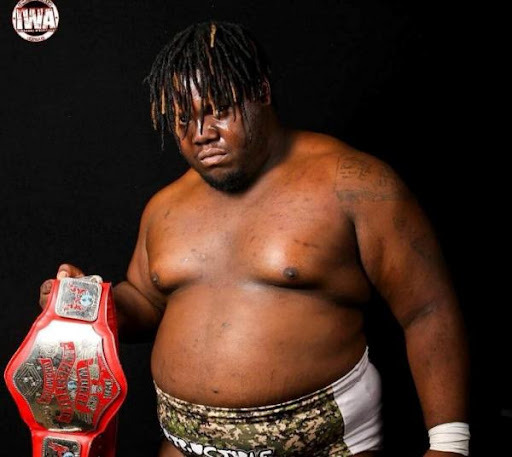
calvin tankman is a fucking menace. hes so fucking fast for a dude his size

keith lee youre goofy as hell for talking how you do, but i love you

abdullah kobayashi, my friend abdullah kobayashi

the stone pitbull isnt really fat, hes just shaped like a small refrigerator but shout out tomohiro ishii

kevin owens, my friend kevin owens
wanna see some ladies too?
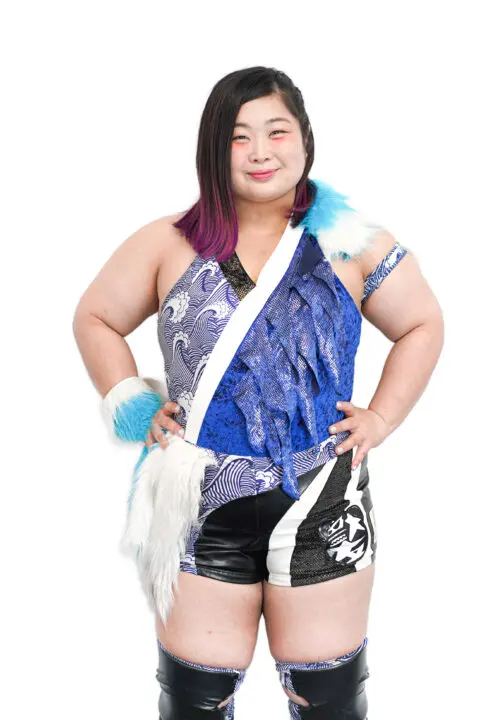
yuu is a ray of sunshine who will literally murder you
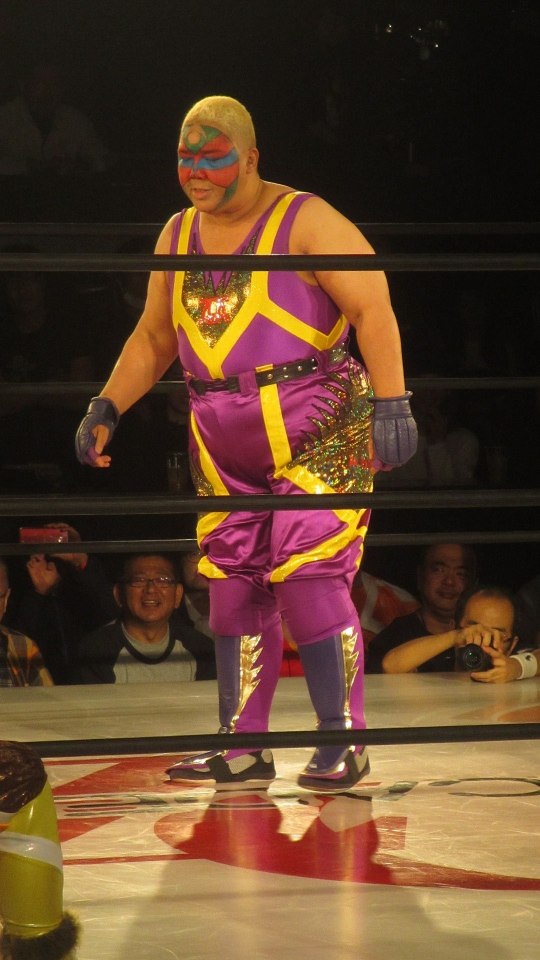
aja kong. go grandma!

yuna manase baby girl im so glad youre back

awesome kong has the distintion of being the first woman to participate in a royal rumble. she didnt do much but she was there! she also could obliterate most people on the planet
14 notes
·
View notes
Text
BEST AMBIENT OF 2024

BEST AMBIENT ALBUMS of 2024 curated by @holsgr

50 : Phexioenesystems - Tone Colour Garden Salmon Universe
49 : 0N4B - Somewhere, left behind 3XL
48 : Daigo Hanada & Yoko Komatsu - Where Clouds Are Born Moderna Records
47 : Ezra Feinberg - Soft Power Tonal Union
46 : Dawn Richard & Spencer Zahn - Quiet in a World Full of Noise Merge Records
45 : Hans Hjelm - Into The Night Self-release
44 : Olli Ahvenlahti - Mirror Mirror We Jazz Records
43 : Sachi Kobayashi - Lamentations Phantom Limb
42 : Sarah Neufeld, Richard Reed Parry & Rebecca Foon - First Sounds Envision Records / One Little Independent
41 : nonkeen - All good? LEITER
40 : PJS - Flora Dronarivm
39 : Félicia Atkinson - Space As An Instrument Shelter Press
38 : Anthéne - Cloudburst Home Normal
37 : Bremer/McCoy - Kosmos Luaka Bop Inc
36 : Princ€ss - Princ€ss wherethetimegoes
35 : G.S. Schray - Whispered Something Good Last Resort
34 : Jasmine Myra - Rising Gondwana Records
33 : YAI - Sky Time AKP Recordings
32 : ann annie - The Wind Nettwerk Music Group Inc.
31 : Seaworthy & Matt Rösner - Deep Valley 12k
30 : Marysia Osu - harp, beats & dreams Brownswood Recordings
29 : Fennesz - Mosaic P-VINE, Inc.
28 : Mary Lattimore & Walt McClements - Rain On The Road Thrill Jockey Records
27 : Glåsbird - A Sonic Expedition Whitelabrecs
26 : Iglooghost - Tidal Memory Exo LUCKYME®
25 : Ross Christopher & City Of Dawn - Spatio Temporal Amoveo Creative
24 : Arushi Jain - Delight Leaving Records
23 : Oliver Patrice Weder - The Shoe Factory Moderna Records
22 : Laura Masotto - The Spirit of Things 7K!
21 : Grand River & Abul Mogard - In uno spazio immenso light-years
20 : William Basinski - September 23rd Temporary Residence Ltd.
19 : Pub - Process The Wise ampoule records
18 : Altus - Ultraviolet Altus Music
17 : Seabuckthorn - This Warm, This Late quiet details
16 : Catherine Christer Hennix - Further Selections from The Electric Harpsichord Blank Forms Editions
15 : Antonina Nowacka - Sylphine Soporifera Mondoj
14 : Lori Goldston & Stefan Christoff - A Radical Horizon Beacon Sound
13 : Sam Wilkes - iiyo iiyo iiyo Self-release
12 : Slow Dancing Society - Do We Become Sky? Past Inside the Present
11 : Svaneborg Kardyb - Superkilen Gondwana Records
10 : Fergus McCreadie - Stream Edition Records
9 : Fabiano do Nascimento & Sam Gendel - The Room Real World Records
8 : Robert Rich & Luca Formentini - Cloud Ornament Self-release
7 : Ludwig Wandinger - Is Peace Wild? light-years
6 : Aidan Baker & Stefan Christoff - Januar Time Released Sound
5 : Hatti Vatti - Zeit R&S Records
4 : Larum - The Music of Hildegard von Bingen | Live at Public Records Puremagnetik
3 : Florian T M Zeisig - Planet Inc STROOM.tv
2 : Alva Noto - Xerrox, Vol.5 NOTON
1 : Lorenzo Montanà - VION n5MD

• BEST EP's 10 : Logic Moon & Henrik Meierkord - Ewiger Wald Dronarivm 9 : Roman Nagel - Home Bigo & Twigetti 8 : Snorri Hallgrímsson - Longer shadows, softer stones Deutsche Grammophon GmbH 7 : Oliver Patrice Weder - Grand Piano Works - Vol. II Moderna Records 6 : Wil Bolton - Quiet Sunlight Dronarivm 5 : Thaddeus - Orbiting Dreams Shimmering Moods Records 4 : PHI-PSONICS - Morning Sun / Arrival Gondwana Records 3 : Jeroen Dirrix - Feel Moderna Records 2 : Max Ananyev - Wings & Winds Self-release 1 : Arborra - Arborra 7K!
• HONORABLE MENTIONS Nicolas Jaar - Archivos de Radio Piedras Rafael Toral - Spectral Evolution Horacio Vaggione - Schall / Rechant Laura Misch - Sample The Earth Oliver Coates - Throb, shiver, arrow of time Nils Frahm - Paris Nala Sinephro - Endlessness Adaa - …img… Lau Andersson - The Weeping Siege MatC - Utoscapes Olivia Belli - Intermundia Alaskan Tapes - Something Ephemeral Mike Nigro - Leaving/Returning Michael Scott Dawson - The Tinnitus Chorus Bill Laurance & The Untold Orchestra - Bloom Bill Laurance & Michael League - Keeping Company Vegyn - The Road to Hell Is Paved with Good Intentions Shay Hazan - Wusul وصول Sam Gendel & Sam Wilkes - The Doober Blake Lee - No Sound In Space T.R. Jordan - Dwell Time II Perila - Intrinsic Rhythm Tristan Arp - a pool, a portal Lynn Avery & Cole Pulice - Phantasy & Reality Matthew Ottignon - Volant Holy Tongue & Shackleton - The Tumbling Psychic Joy of Now
• BEST REISSUES Fennesz - Venice 20 Aphex Twin - Selected Ambient Works Volume II [Expanded Edition]

#ambient#ambient music#best ambient music#best music of the year#best music of 2024#best of 2024#year-end list#best ambient#best music#bandcamp#best albums#best albums of 2024
4 notes
·
View notes